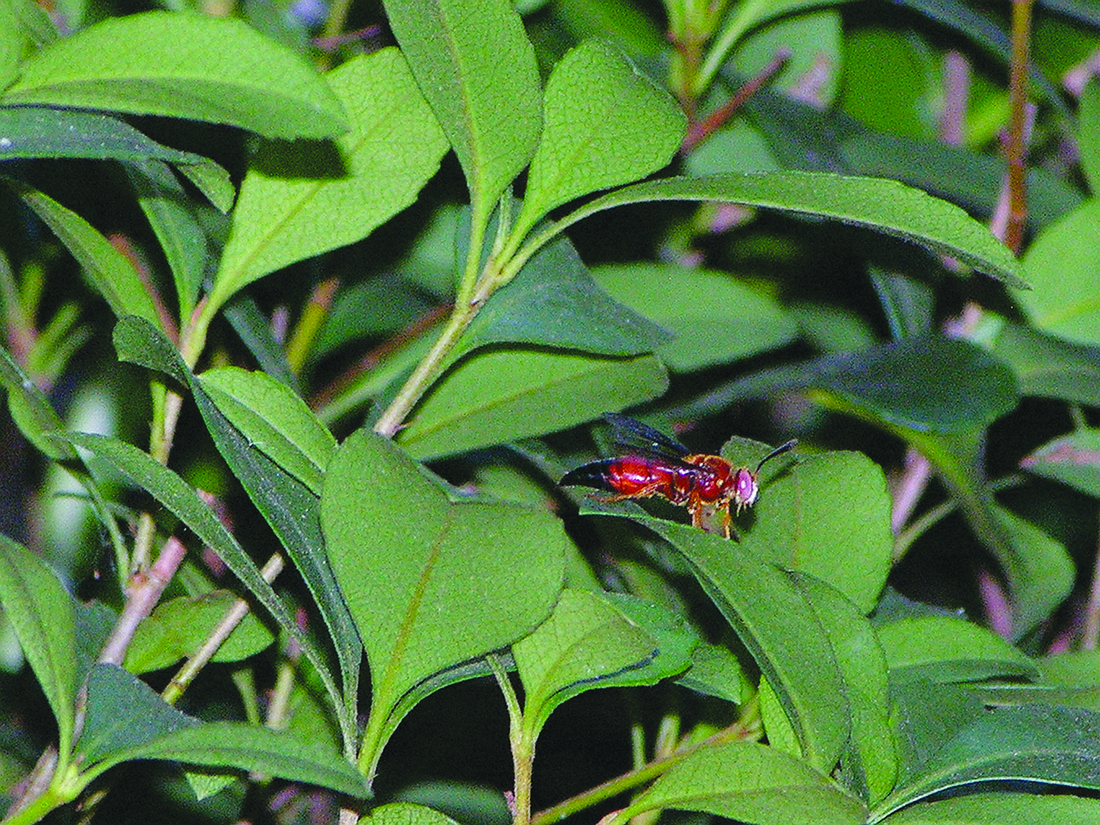- May 4, 2024
-
-
Loading

Loading

The truth about the wasps at Matt and Margaret Callihan’s Sabal Cove home doesn’t (usually) sting.
Matt Callihan first noticed the rust-orange insects with black abdomens swarming around his porch last summer. He planned to hire an exterminator but couldn’t locate a nest.
The insects returned this year, but because the insects didn’t sting or threaten anyone last year, Callihan knew that an exterminator wasn’t necessary. But he was curious about the bugs, which are larger than typical wasps: They’re between three-quarters of an inch and 1-inch long, and females are larger than the males.
After researching bugs online, he knew to look for a burrow, rather than a typical wasp’s nest. After a five-to-10-minute search, he found the burrow on his porch. And after Googling, he found that they were most likely Caribbean cicada killers, or Sphecius hogardii.
A University of Florida website said that the wasps were rare in Florida. Callihan then discovered the website of Lafayette College biology professor Chuck Holliday, Ph.D., who studies cicada killers. Within 30 minutes, he received a phone call from Holliday, who, two days later, flew to the area from Easton, Pa., to check out the wasps at the Callihan home.
“This particular breed is very rare,” Holliday said. “Very little is known about them.”
The breed is so rare that Holliday had never before observed them alive. To his knowledge, only one paper has been published about the Caribbean cicada killer, and it was written in Spanish by two Cuban scientists. The wasps at the Callihan home are the first documented Caribbean cicada killers found in the Sarasota area; the species is typically found on Caribbean islands, the Florida keys and in South Florida.
According to Holliday, Callihan is correct in his observation that cicada killers are generally harmless.
Males are unable to sting, while females only sting when pinched or when preying on cicada. Sometimes the wasps induce fear because males swarm in a small area by the dozen. But, in actuality, males are hovering about as they wait for the more decisive female.
“It’s sort of like the front porch of a fraternity house on a Saturday night,” Holliday said. “Except there’s no alcohol involved.”
Females, on the other hand, tend to fly with more purpose, from one location to another.
Cicada killers spend 90% of their lives underground as larvae, emerging for just two to six weeks during the summer in order to mate.
According to Holliday, cicada killers play an important role because they exert biological control on cicadas, some species of which cause mild damage to deciduous trees. They’re also fascinating to study, he said, because females select the sex of their offspring.
Holliday said that learning more about all five species of cicada killer wasps that exist in the Western Hemisphere is exciting for scientists.
Researchers are eager to know sex distribution of the species, because it will help them understand the selection process for females in determining the sex of their offspring.
So, are more Caribbean cicada killers buzzing around Longboat Key? Maybe, maybe not, according to Holliday, who found a total of four burrows, counted 17 males and observed multiple females in the Callihan yard over the weekend
“They’re very spotty,” he said. “They can be all over one yard, and then the next-door neighbor can have none.”
As for Callihan, he now considers himself an admirer of Caribbean cicada killers. He has been checking on the burrows every day on his porch and in his yard. But the wasps won’t be long-term guests at the home: Cicada killers die annually.
“It’s just part of their life cycle,” Callihan said.
Contact Robin Hartill at [email protected].
Bugs on the brain
Have you seen a large wasp that you think could be a cicada killer wasp? If so, Lafayette College biology professor Chuck Holliday, Ph.D., would like to hear from you. If possible, send him a digital photograph of the insect in question. Contact him at [email protected] or visit his website at ww2.lafayette.edu/~hollidac/CWHpage.html.